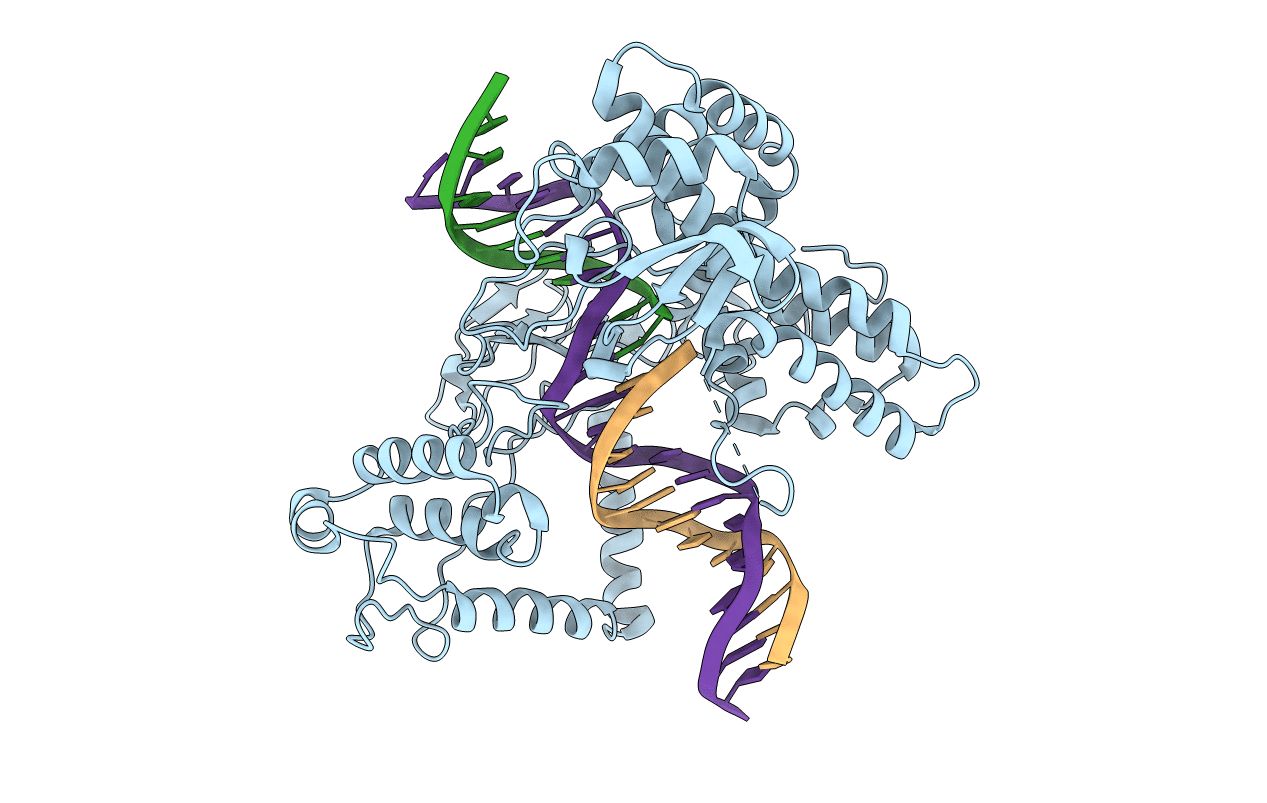
Deposition Date
2001-10-08
Release Date
2002-12-04
Last Version Date
2024-11-06
Entry Detail
PDB ID:
1K4S
Keywords:
Title:
HUMAN DNA TOPOISOMERASE I IN COVALENT COMPLEX WITH A 22 BASE PAIR DNA DUPLEX
Biological Source:
Source Organism:
Homo sapiens (Taxon ID: 9606)
Host Organism:
Method Details:
Experimental Method:
Resolution:
3.20 Å
R-Value Free:
0.22
R-Value Work:
0.21
Space Group:
P 32


